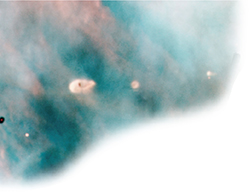Figure 29 The Hubble Space Telescope took this photo of what are thought to be protoplanetary disks around several young stars. These stars are located about 1500 light-years away in the Orion Nebula, a region of intense star formation. Predicting According to the nebular theory, what will these protoplanetary disks eventually become?

Composition and Size of the Planets
At low pressures, such as those found in space, cooling materials generally condense directly from a gas into a solid. Different materials change into a solid at different temperatures. Ice-forming materials, such as water, ammonia, and methane, condense at low temperatures. Rock-forming materials condense at much higher temperatures.
When the solar system formed, the temperatures near the sun were very high. The temperature near Mercury's orbit was about 1200 K, and near Mars's orbit it was roughly 500 K. Water and other ice-forming materials vaporize at these temperatures, so they did not play a role in the early formation of the terrestrial planets.  The terrestrial planets are relatively small and rocky. In part, that is because the inner solar system was too hot during their formation for ice-forming compounds to condense.
The terrestrial planets are relatively small and rocky. In part, that is because the inner solar system was too hot during their formation for ice-forming compounds to condense.
In contrast, ice-forming materials could condense in the outer solar system because it was much colder. Much more material was available, and these planets grew to many times the size of Earth. As these planets grew, their gravity increased, and they were able to capture the extremely abundant hydrogen and helium gas from the surrounding space.  The gas giants are large and have low densities because the outer solar system was cool enough for ice-forming compounds to condense.
The gas giants are large and have low densities because the outer solar system was cool enough for ice-forming compounds to condense.
As Figure 29 shows, astronomers have been able to observe protoplanetary disks around distant newborn stars. Astronomers have also detected more than a hundred planets in orbit around distant stars. This evidence of planets forming around other stars, plus the results of computer simulations, provides support for the nebular theory.
Section 25.5 Assessment
Reviewing Concepts
 List the major steps in the formation of the solar system according to the nebular theory.
List the major steps in the formation of the solar system according to the nebular theory. Why are compounds such as ammonia most common in the outer solar system?
Why are compounds such as ammonia most common in the outer solar system?What happened to the planetesimals that once orbited the sun?
What was the protoplanetary disk?
Critical Thinking
Applying Concepts Why do all of the planets revolve around the sun within the same plane and in the same direction?
Inferring Astronomers are able to detect planets around distant stars because of the gravitational effects of the planets as they orbit the star. Why do you think most of the planets found so far have been very massive?
Writing in Science
Cause-Effect Paragraph Write a paragraph explaining why the terrestrial planets formed mostly from metal and rock, and not hydrogen and helium like the gas giants.




